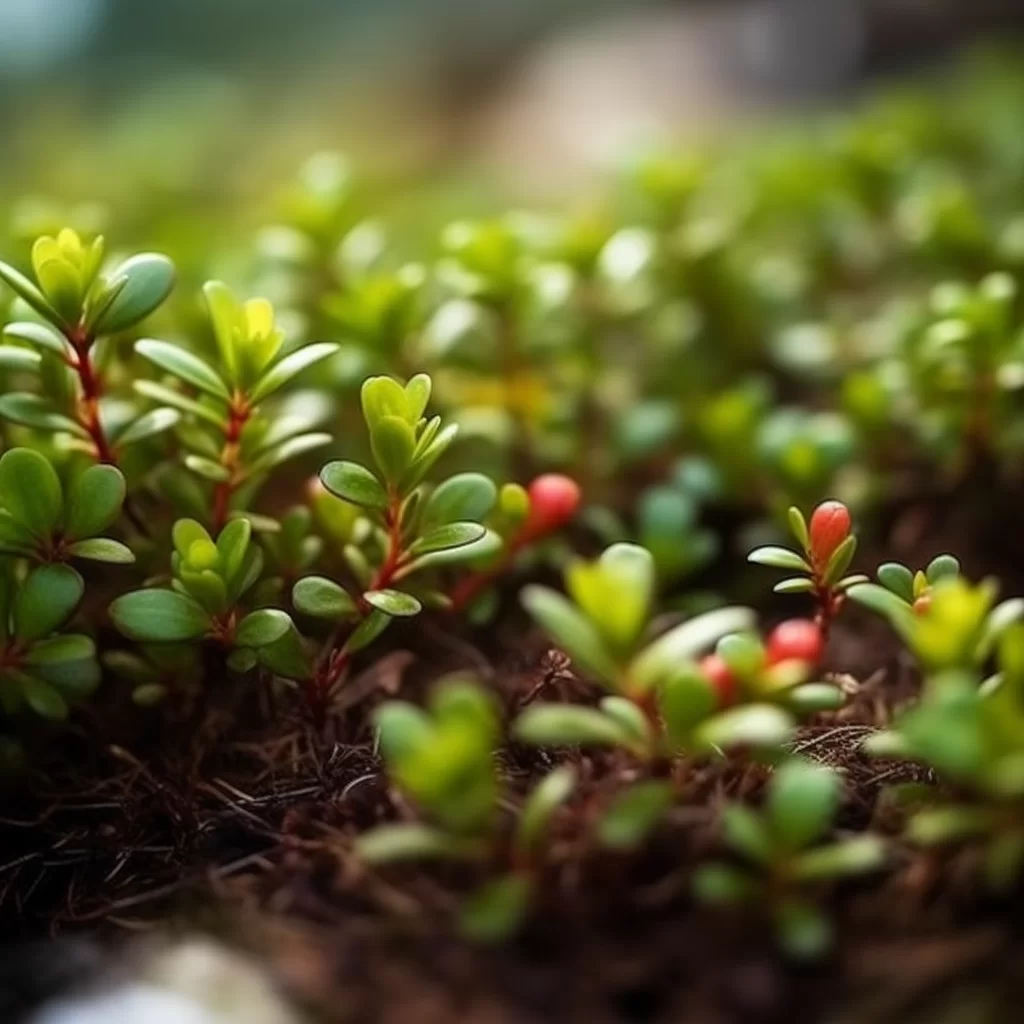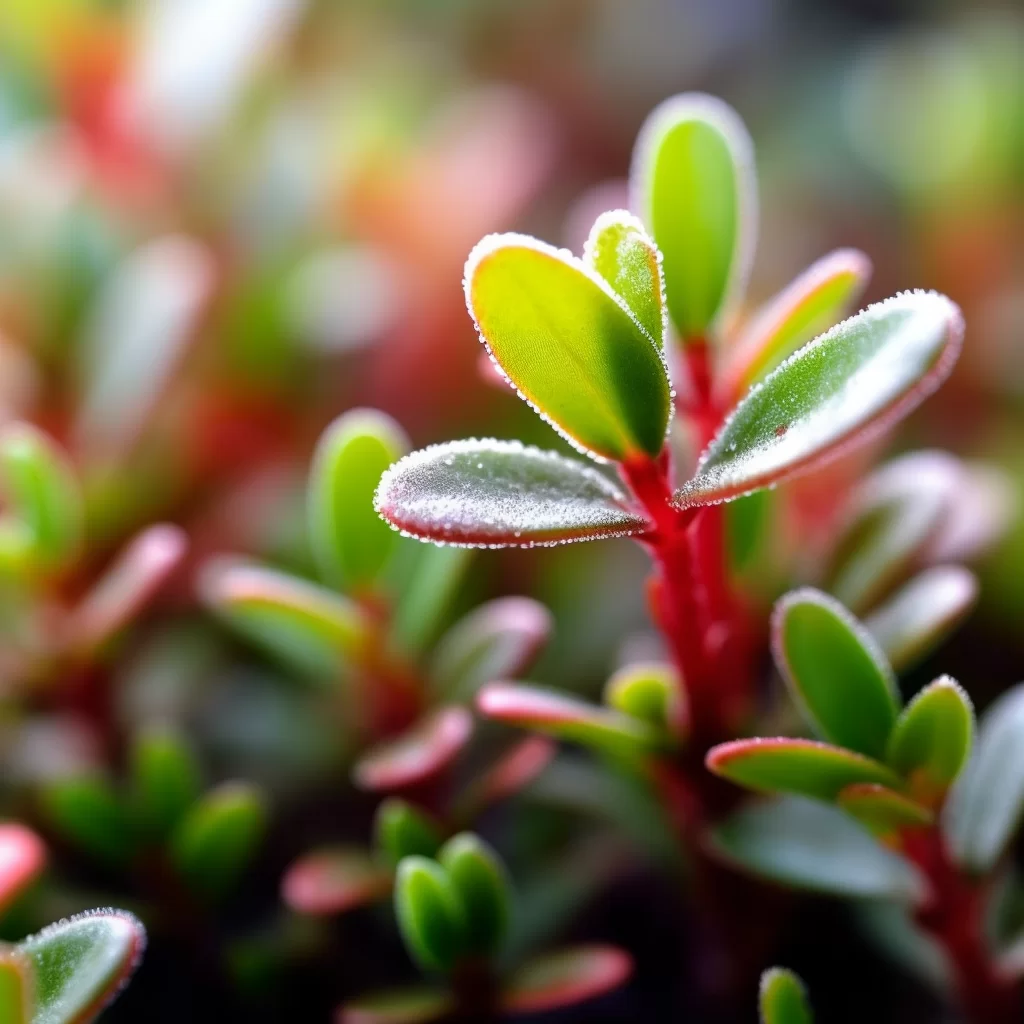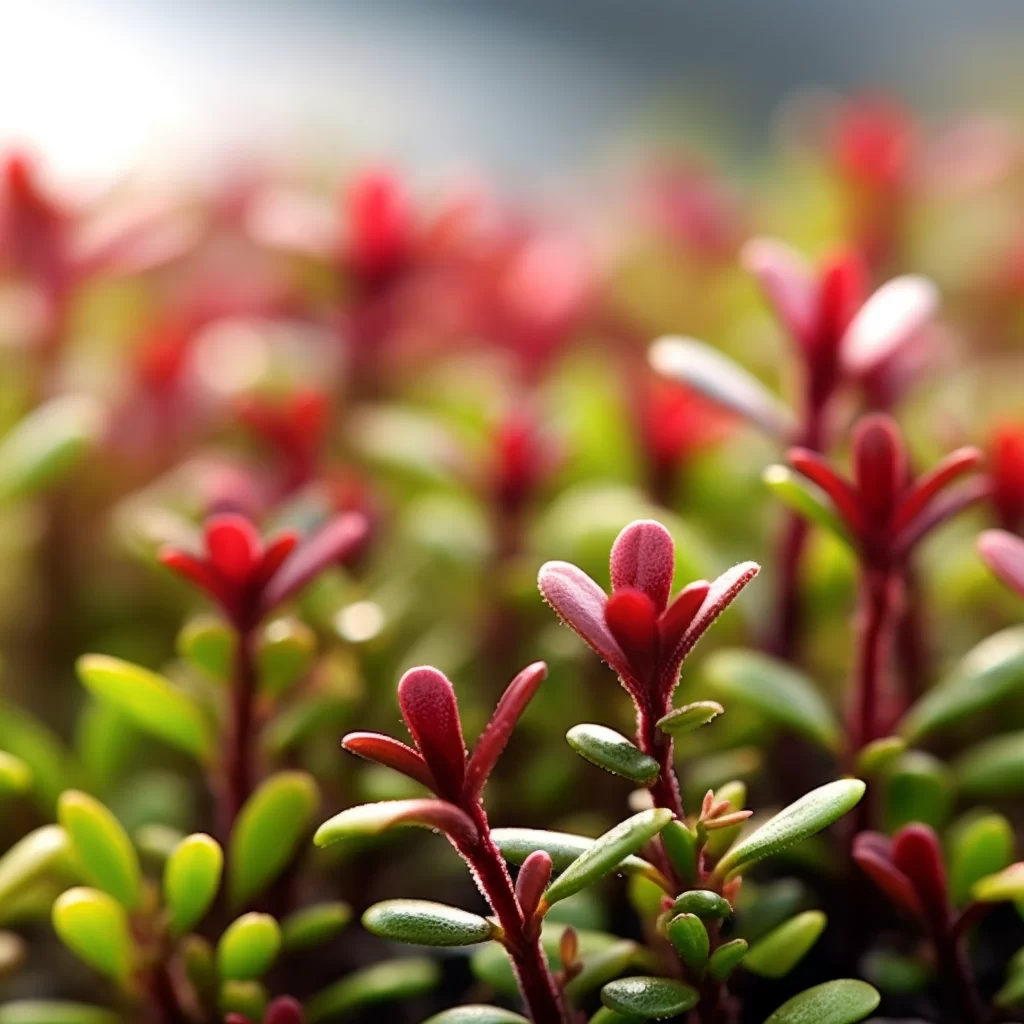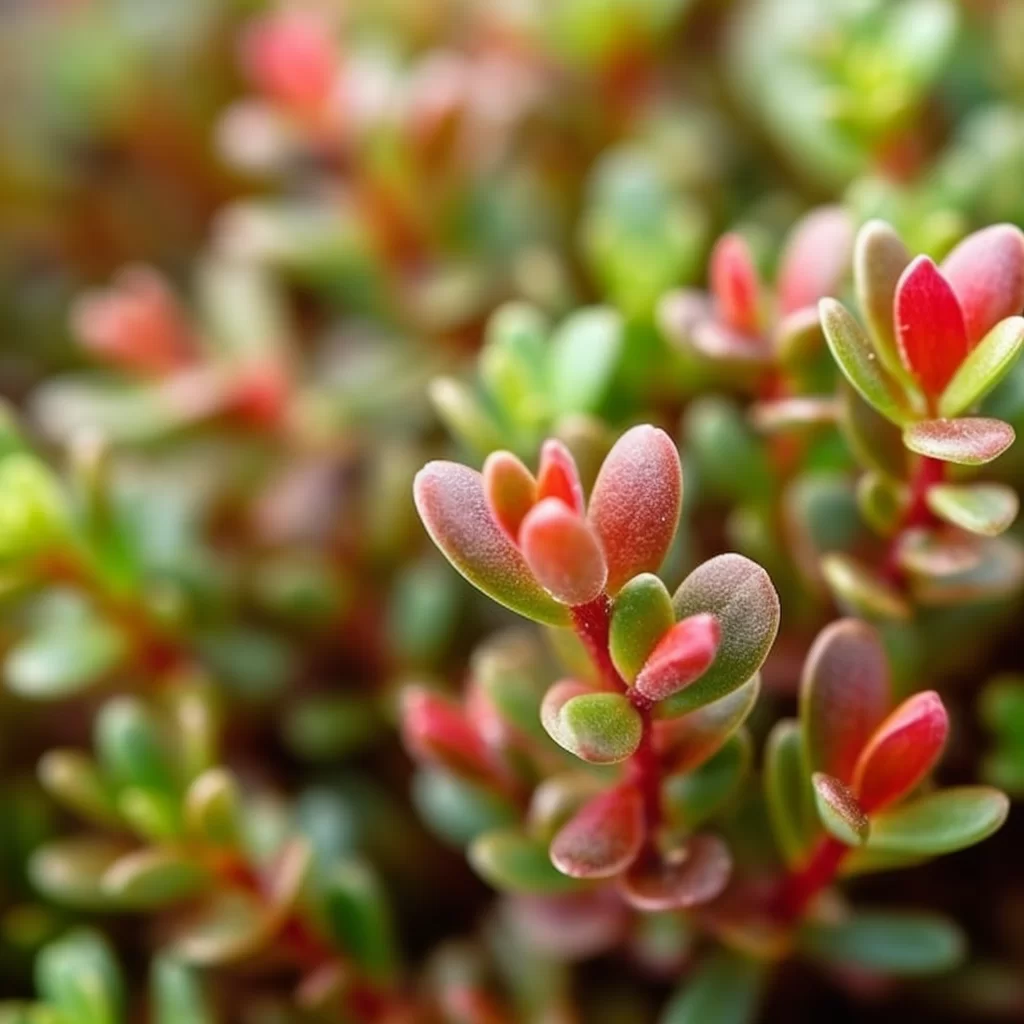Story of Day :
The Ultimate Guide to Growing and Caring for Bearberry Plants
If you’re searching for an attractive plant that requires minimal care and can survive in extreme environments, the bearberry plant may be just what you need.
This evergreen shrub, also known as kinnikinnick or arctostaphylos uva-ursi, grows natively in North America and is often seen thriving in rocky or sandy soils.With its vibrant green leaves and small red berries, the bearberry plant makes a lovely addition to any garden or landscape.
It’s also a great choice if you live in an area with harsh weather conditions such as droughts or cold winters.
Not only is it low-maintenance but it’s also resistant to pests and diseases which means less fuss for you.
If you want to add some natural beauty to your outdoor space without too much effort – look no further than the bearberry!If you’re looking for an interesting and distinctive addition to your garden, bearberry plants are definitely worth considering.
These hardy evergreens not only provide year-round greenery, but they also produce bright red berries that are a favorite food of wildlife.
In this guide, we’ll delve into everything you need to know about planting and tending to bearberry plants.
Whether you’re a seasoned gardener or just starting out, our comprehensive tips will help ensure that your bearberries thrive and flourish in any climate.From selecting the perfect location for your plant to nurturing it through each season, we’ll cover all the essential steps for growing healthy bearberry plants.
You’ll learn about soil preferences, watering schedules, pruning techniques and more! Plus, we’ll explore some creative ways to incorporate these unique shrubs into various landscaping designs.
With our complete guide at hand – whether you want a low-maintenance groundcover or something taller – growing beautiful bearberries is easy!
Planting Bearberry Plants
If you’re planning to plant bearberry, it’s crucial to keep a few essential factors in mind.
First and foremost, bearberry plants thrive in well-draining soil that is rich in organic matter.
They also prefer full sunlight but can tolerate partial shade.
Additionally, it’s important to ensure that the location where you plan to plant your bearberry has adequate space for growth as these plants can spread up to 6 feet wide.Another significant consideration when planting bearberry is the climate and weather conditions of your region.
Bearberries grow best in cooler climates and are often found naturally growing in subarctic regions.
These plants are tolerant of extreme temperatures and can withstand frosty winters without any issues.
However, if you live in a warmer climate, ensure you provide enough water for these drought-tolerant shrubs during hot summers and periods of low rainfall.
With careful attention paid towards these factors, planting bearberries will be an easy task with beautiful results!
- Light: Bearberries require full sun exposure.
Make sure they receive at least six hours of direct sunlight per day.
- Soil: They prefer well-draining soil that is slightly acidic.
Soil pH between 4.5 -6.0 works best for them.
- Spacing: Space your bearberries at least three feet apart from each other if you are planting more than one bush.
- Mulching: Mulch the soil around your newly planted bearberries with pine needles or bark chips which will help in moisture retention and also maintain acidic pH.
 Bearberry plants, also known as kinnikinnick, are low-growing evergreen shrubs that thrive in the wild and can be a great addition to your garden.
Bearberry plants, also known as kinnikinnick, are low-growing evergreen shrubs that thrive in the wild and can be a great addition to your garden.
These plants require minimal maintenance and care, making them an ideal choice for those who want a visually appealing garden without putting in too much effort.
To keep bearberries healthy, they need well-draining soil and full sun exposure.
Watering should be done sparingly during dry periods to avoid overwatering the plant.Furthermore, bearberries require pruning once every two years to promote new growth and prevent any potential disease or pest infestations.
Additionally, fertilizing is not necessary for these shrubs since they can survive with only natural nutrients found in the soil.
Finally, bearberries are perfect groundcover plants that require little attention but provide year-round beauty with their attractive foliage and red berries that adorn the plant through fall into winter months.Bearberries are an easy-to-care-for plant that requires some basic maintenance to thrive.
Although they are not high-maintenance, bearberries still need attention in the form of watering and pruning.
Regular watering is vital to ensure the soil stays moist, especially during dry spells or hot weather.
Pruning helps keep bearberries looking neat and healthy by removing dead or damaged branches.
With proper care, these plants can grow into lovely shrubs with lush green foliage and attractive red berries.Taking care of bearberries doesn’t have to be a daunting task; it’s a simple process that adds beauty to any garden.
These hardy plants can withstand harsh conditions such as drought and extreme temperatures, making them an ideal choice for those who do not have a lot of time on their hands but want attractive outdoor spaces all year round.
By watering them regularly and performing routine pruning when necessary, you’ll see your bearberry bushes flourish – providing you with fresh air and beautiful scenery right outside your doorstep!
- Irrigation:Bearberries don’t like wet feet; therefore establish watering routine while keeping it mind not giving excess water because root rot disease can occur due to overwatering .
Water them deeply once every week or two weeks, depending on the weather conditions.
- Pruning: Bearberries don’t require pruning every year for their growth.
But in case they outgrow their space or need to remove any deadwood, prune them during winters before new growth begins.
- Fertilization: Bearberries grow naturally in low-nutrient soils and generally do not require fertilization if you have chosen a good soil mix for planting.
They prefer to get nutrients from decomposed pine needles and other organic material that accumulates around them.
- Pest Control:Bearberry plants typically do not experience many pest problems but watch out for spider mites or aphids on your plant’s leaves which can be treated with insecticidal soap spray.
Bearberry plants, also known as uva-ursi, have been used by indigenous cultures for medicinal purposes for centuries.
The leaves of the plant contain a compound called arbutin, which has antibacterial properties and is often used to treat urinary tract infections.
Additionally, bearberry has antioxidant properties that can help protect the body from damage caused by free radicals.In recent years, bearberry has gained popularity in the skincare industry due to its ability to reduce hyperpigmentation and improve skin tone.
Arbutin is a natural skin-lightening agent that can help fade dark spots and improve overall complexion.
With its numerous health benefits and versatile uses in both traditional medicine and modern skincare products, bearberry is proving to be a valuable plant with much potential yet to be explored.Bearberry plants are a wonderful addition to any garden thanks to their stunning appearance.
However, they offer more than just aesthetic value.
These plants also provide a range of health benefits that can improve your overall well-being.
The leaves of bearberry plants contain arbutin, which is known for its anti-inflammatory and antibacterial properties.
This compound may help reduce inflammation in the body, alleviate pain caused by conditions like arthritis, and even prevent infections. Moreover, bearberry leaves have been used for centuries as a natural remedy for urinary tract infections (UTIs).
Moreover, bearberry leaves have been used for centuries as a natural remedy for urinary tract infections (UTIs).
They are believed to have diuretic properties that help flush out bacteria from the bladder and kidneys.
Additionally, some studies suggest that bearberry extracts may be useful in preventing certain types of cancers due to their high levels of antioxidants.
Overall, adding bearberry plants to your garden not only enhances its beauty but also provides several health benefits that can improve your quality of life.
- The leaves of bearberry plants are used as a traditional medicinal herb due to its antiseptic properties which helps treat urinary tract infections (UTIs).
- Bearberries are also known as natural scrubbers as they can absorb pollutants from the soil and air, making them beneficial in areas with high levels of pollution.
The bottom line is a phrase commonly used to indicate the ultimate conclusion or essential aspect of a matter.
It is an expression that encapsulates the fundamental message or key takeaway that one should derive from any given situation.
In business, it often refers to the net income or profit after all expenses have been deducted.
The bottom line can also be used in personal contexts, such as when making important life decisions, where it represents the crucial outcome that one needs to achieve.
It is a concise and effective way of summarizing complex ideas and serves as a guide for determining priorities and making informed choices.In today’s world, there are many competing demands for our time and attention.
Understanding what truly matters can be challenging amidst all the noise and distractions.
This is where focusing on the bottom line becomes crucial – by identifying what truly matters most in any given scenario, we can stay true to our values and make better decisions accordingly.
Whether it’s at work or in our personal lives, having clarity on our goals allows us to align our efforts towards achieving them efficiently and effectively while minimizing unnecessary distractions or wasted resources.
Ultimately, keeping an eye on the bottom line helps us stay focused on what really counts – leading us towards greater success in both professional and personal spheres of life!If you’re searching for a plant that requires minimal effort but still offers plenty of visual appeal, consider the bearberry plant.
This hardy shrub can bring beautiful structure and texture to your garden without much fuss.
Plus, its distinctive benefits make it an even more enticing option.Not only does the bearberry add aesthetic value to your outdoor space, but it also provides some distinct advantages.
For instance, its leaves and berries contain arbutin which has antioxidant properties that can help improve skin tone and reduce inflammation.
Additionally, the plant’s roots have been used for centuries in traditional medicine as a natural remedy for urinary tract infections and other ailments.
With so many perks to offer alongside its low-maintenance nature, the bearberry is certainly worth considering for your garden or landscaping project!For those who want to add some greenery to their garden without committing too much time or effort, bearberry plants are a great option.
These hardy shrubs require minimal care, with only watering and occasional pruning needed to keep them healthy and looking great.
They’re perfect for busy homeowners who want low-maintenance landscaping that still looks beautiful.Bearberry plants offer more than just ease of upkeep, though.
They also have a unique appearance that can add visual interest to any outdoor space.
With their bright red berries and glossy evergreen leaves, bearberry plants provide year-round color that will stand out against the backdrop of other flowers and foliage in your yard.
So if you’re looking for an easy way to enhance your landscape with vibrant greenery, consider planting some bearberry shrubs today!